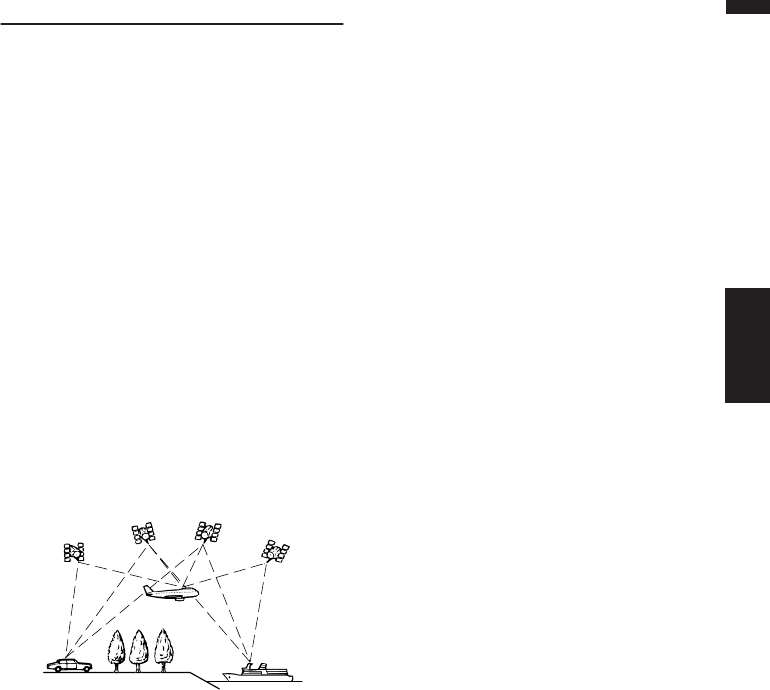
109
AppendixNAVI/AV
Positioning Technology
The Navigation System accurately measures your
current location by combining the positioning by
GPS and by Dead Reckoning.
Positioning by GPS
The Global Positioning System (GPS) uses a net-
work of satellites orbiting the Earth. Each of the
satellites, which orbit at a height of 68,900,000
feet (21,000 km), continually broadcasts radio
signals giving time and position information. This
ensures that signals from at least three can be
picked up from any open area on the Earth’s sur-
face.
The accuracy of the GPS information depends on
how good the reception is. When the signals are
strong and reception is good, GPS can determine
latitude, longitude, and altitude for accurate posi-
tioning in three dimensions. But if signal quality
is poor, only two dimensions, latitude and longi-
tude, can be obtained and positioning errors are
somewhat greater.
Positioning by dead reckoning
The 3D Hybrid Sensor in the navigation unit also
calculates your position. The current location is
measured by detecting driving distance with the
speed pulse, the turning direction with the Gyro-
sensor, and inclination of the road with the G
sensor.
The 3D Hybrid Sensor can even calculate
changes of altitude, and corrects for discrepan-
cies in the distance traveled caused by driving
along winding roads or up slopes. Also, the Navi-
gation System learns the driving conditions and
stores information in the memory; thus, as you
drive more, the precision of the positioning
becomes more accurate.
The method of positioning changes as follows
depending on whether the speed pulse of your
vehicle is detected or not:
3D hybrid mode
This is active when the speed pulse is detected.
Inclination of a street can be detected.
Simple hybrid mode
When the speed pulse is not detected, position-
ing is performed in this mode. Only horizontal
movement is detected, so it becomes less accu-
rate. Also, when the positioning by GPS is not
available, such as when your vehicle enters a
long tunnel, the discrepancy between your actual
and calculated position may become bigger.
❒ The speed pulse data comes from the speed
sensing circuit. The location of this speed
sensing circuit depends on your vehicle
model. In some cases, it is impossible to
make a connection to it, and in such a case
we recommend that the ND-PG1 speed pulse
generator (sold separately) be used.
How do GPS and dead reckon-
ing work together?
For maximum accuracy, your Navigation System
continually compares GPS data with your esti-
mated position as calculated from the data of 3D
Hybrid Sensor. However, if only the data from the
3D Hybrid Sensor is available for a long period,
positioning errors are gradually compounded
until the estimated position becomes unreliable.
For this reason, whenever GPS signals are availa-
ble, they are matched with the data of the 3D
Hybrid Sensor and used to correct it for improved
accuracy.
To ensure maximum accuracy, the dead reckon-
ing system learns with experience. By comparing
the position it estimates with your actual position
as obtained using GPS, it can correct for various
types of error, such as tire wear and the rolling
motion of your vehicle. As you drive, the dead
reckoning system gradually gathers more data,
learns more, and the accuracy of its estimates
gradually increases. So, after you have driven
some distance, you can expect your position as
shown on the map to show fewer errors.


















